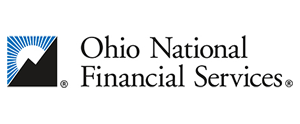Borrowing money is often a necessity for growing and expanding a new business, but it’s also one of the least understood parts of business management. So, what is the best way to go about it?
First, use some common sense. Only borrow money that is well within the means of the business. In other words, can you afford the repayments and the interest over the length of the loan? It may seem obvious, but it’s an important consideration.
Once you’ve decided to take a loan, maximizing on your assets and taking the largest loan possible is not the way to go. Here’s why: Let's assume you have assets of $1 million and you borrow 70 percent ($700,000) against this amount. This heavy leverage will require a large repayment schedule.
A case in point
This is all well and good, but only if you can more or less guarantee that you have, and will continue to have, continual cash flow into your business, and are making profits that will last the length of the loan. Today, no one knows this for certain; so let’s look at the risk of this loan situation.
For the sake of this exercise, let's say the interest rate is 6 percent, fixed over 10 years. The interest will be $42,000, plus capital repayments of $70,000 over the 10-year period of the loan. Capital repayments, plus interest in year one, is $112,000 or $9,333.00 each month. (In reality, the interest payments will decrease each year because of the annual reductions of capital, but these figures are a good starting point.)
If your planned business expansion--the reason for borrowing this money--is good and if you increase sales and profit using this loan, you should be able to afford the repayments. However, those are two big “ifs.” There is always a danger when you take a large loan and get stretched-out repayments.
The other downside of this loan scenario is that you have maxed out on your assets and collateral, and have no financial movement. To me, this could be a slow, self-inflicted punishment of an over optimistic businessman.
Smart borrowing
I would prefer to utilize a smaller amount of my assets and make the business grow within my control. This way, I would not be putting all of my eggs in one basket. If I had $1 million in assets, I would use $250,000 against a loan, still leaving me with some assets to use if needed. If things do go wrong, I can handle it with the remaining equity and the business I still have. Keep your cash flowing into your hands, not those of the lender.
When you are maxed-out, the rates offered by the banks are usually off the chart. The bank will pressure you into reducing your debt, and you will be forced to sell an asset when the market is low. You will achieve a price less than you expected.
When one of my businesses failed, and I was indebted to the bank I got the loan from, I could demonstrate that I had a way of paying it back, even though it would be for a longer period. This was no big deal for the bank, since it earned more interest. The point was to convince the bank that I could meet the commitment to it.
Having your assets free of loans, or with small loans against them, gives you better borrowing power. Being able to offer a mortgage-free building against a loan, or a building that has little debt, puts you in the driver’s seat. If you have a valuable asset, you can go to any bank and negotiate with it.
Here are some final tips:
- Try to build up as many tangible assets as possible. Take real estate, for example. Get it paid off or with a minimal loan. You then have something to use when you need cash to expand and grow your business.
- Don’t make the tax-deduction carrot the reason to borrow and get in debt.
- If you use up all of the equity in your property, you lose leverage and control of your assets and become vulnerable where someone else can ring your bell.
- Above all else, remember that borrowing money does not make a bad idea a good one!
Sure, fortune favors the brave. I believe success in business is about taking risks, but only risks that you can calculate. Make sure you assess the risk of borrowing carefully and consider the full extent of financial problems if things go wrong. When in doubt, invest in tangible assets and remember that having a business heavily mortgaged is like driving a car with the brakes on. Many smart people have ruined a good business because they are over geared.
By Victor Green
---------
Victor Green, author of How to Succeed in Business by Really Trying, has a long record of founding and growing businesses. Now retired, he lectures and mentors small-business owners and new entrepreneurs in conjunction with SCORE and the U.S. Small Business Administration. Above all else, he encourages his clients to “invest in common sense.” For more information, visit: www.howtosucceedinbusiness.com.






.png?width=300&height=300&name=CC%202025%20Ad%20(300%20x%20300%20px).png)
.png?width=300&height=600&name=Tax%20Talk%20Graphic%20-%20email%20tower%20(300%20x%20600%20px).png)



.png?width=300&name=NAIFA-FSP-LH%20with%20tagline%20-%20AT%20blog%20email%20ad%20(300%20x%20250%20px).png)
.png?width=728&height=89&name=2024%20Congressional%20Conference%20(728%20x%2089%20px).png)
